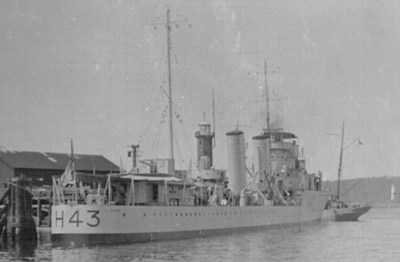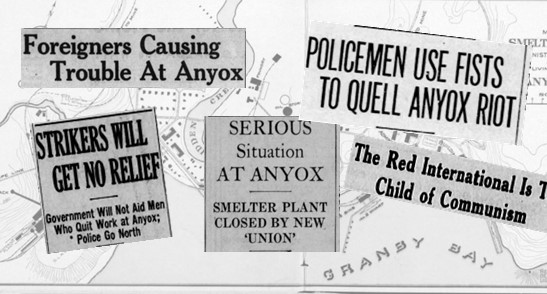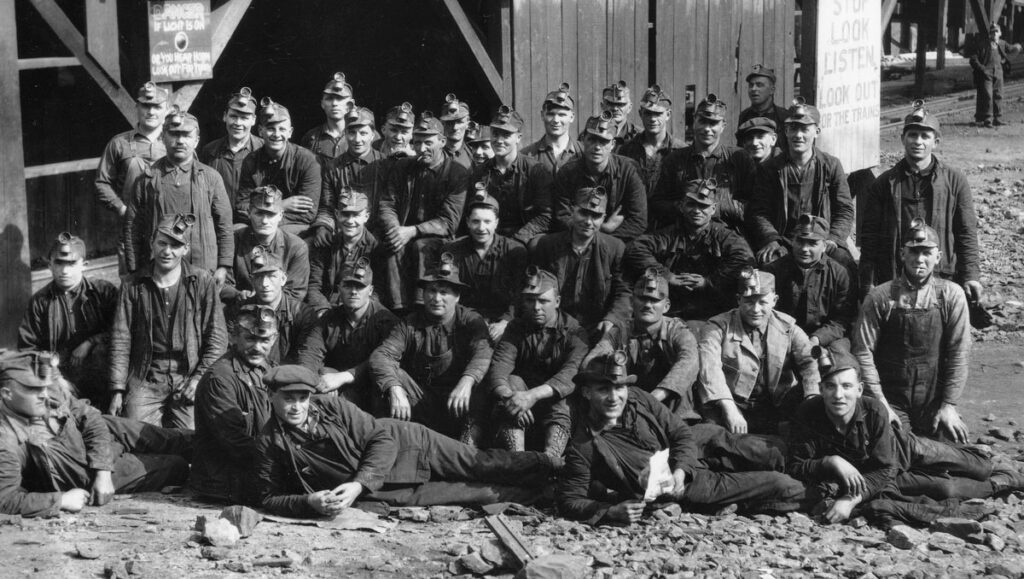Anyox and the 1933 Miners’ Strike
Published: October 1, 2024
Authors: Donna Sacuta, BCLHC Executive Director
400 miners, 100 police, two navy ships and a machine gun
Anyox was a small, isolated company-owned coastal community in northwestern B.C. without road or rail access. It was mined between 1914-1935 for its copper and other precious metals by Granby Consolidated Mining, Smelting and Power. Granby “Owned the souls” of the 1,500 who lived in Anyox, BC, “from the minerals in the hills, the police station building, the two-mile rail line, the dance hall, the hospital and the keyholes in our homes,” wrote journalist Denny Boyd who was born there. (Denny Boyd, The Vancouver Sun, 30 January 1988, A3)
Miners earned $3.25 a day, muckers $2.75 and labourers $2.40. Single men paid the company $1.10 a day for room and board, seven days a week, whether or not they were working. The miners organized their union secretly; the company post office intercepted all mail bearing union letterheads. (Boyd, The Vancouver Sun, 1988, A3)
The Mine Workers of Canada was an affiliate of the Workers Unity League, whose Communist connections the company and politicians called the “red menace.” On February 1, 1933 after three pay cuts in a year, Anyox’s 400 miners went on strike. Smelter, concentrator, crushers and maintenance shops joined the strike two days later. What ensued was a vicious battle between the workers and the company supported by the heavy hand of the state.

Navy destroyer HMCS Skeena was anchored off Anyox during the 1933 strike. Royal Canadian Navy photo.
Within 24 hours of the strike’s start, 100 provincial police were on their way to Anyox by boat and by air. A machine gun was set up outside the bunkhouse. HMCS Skeena, a navy destroyer, was dispatched by the Dominion Government and anchored in the harbour. Its searchlights played on the town all night, terrifying the community. HMCS Malaspina waited offshore.
Pete Loudon, then a schoolboy, remembered the haunting sound of hundreds of miners’ feet pounding the plank road leading from the mine towards the beach where the smelter and company offices were located. The miners marched seven or eight abreast in solidarity. Police met them on a bridge and fired their revolvers into the air, ordering the men to disperse. Until that point the march was peaceful, but no longer. The miners rushed the police with their fists and anything else they could find. The police beat the workers with blackjacks (lead-filled clubs); one miner lost an eye.
“They were wearing their hard hats and walking purposefully in a tight body. They weren’t talking but you could hear their feet pounding the boards. You could smell their determination as they headed past us. At that moment everything changed for us in Anyox,” wrote Loudon. (Loudon, P. (1973). The town that got lost: A story of Anyox, British Columbia. Gray’s Pub.)

Government and the press blamed foreigners and Communists for the events that took place at Anyox in February 1933.
Within two weeks the strike was broken. Union organizer Tom Bradley was arrested in Prince Rupert; the charge of unlawful assembly was subsequently dismissed. On February 6, Granby Consolidated posted notices that the camp would be permanently closed. With the backing of the police, 320 strikers were rounded up, marched to the docks and forced to leave on the next steamship.
Before long, the company announced it would re-open the mine with scabs. Barney McGuire, who grew up in nearby Alice Arm, remembers single unemployed men told they would be cut off relief payments if they didn’t scab in Anyox, but they resisted. “Not one of them would go to work there,” says McGuire. “They got in touch with the union at Prince Rupert and the union sent them enough food to tide them over.” Union members in Vancouver and Prince Rupert pitched in to search departing steamships for scabs headed north.
In 1935, Granby Consolidated shut the mine, closed the town and moved on to its other properties. The workers dispersed around the province.
The union had one political supporter in master mariner Bert Kergin (Liberal) MLA for Atlin. In the legislature in Victoria, Kergin decried the brutality and red-baiting of the Conservative government and company thugs. He said Granby Consolidated was a foreign company acting as, “Employer, landlord and merchant. The red menace is largely imaginary.” Miners, Kergin said, “Were no more reds than any other working men with a grievance.” He called the expulsion of the union members “kidnapping”. “If they call that British justice, then I am a Red,” he concluded. Kergin’s support ended his political career. In 1933 he lost the Liberal nomination to a candidate backed by the mine bosses.
Today, Anyox (Nisga’a – hidden waters) is one of hundreds of abandoned resource towns around BC.

